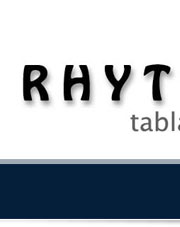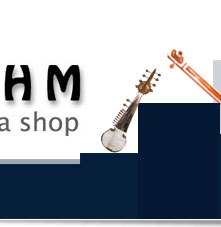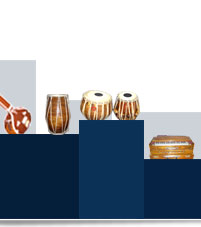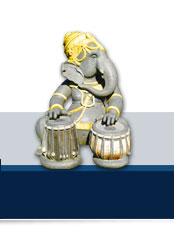Despite the plethora of musicologist research and India 's rich archeological history, creating a precise account of the birth of tabla is presently challenging. One of the most beautiful things about tabla is also of origin to the complexity of this pursuit. The learning system of tabla is and always has been one of the Guru system; oral classes handed down from Guru to student. Consequently, there are no authentic documents or books pre-ceding the mid-twentieth century. The current Parampara, or lineage tree, of tabla can be traced back over the past three hundred years through a dissention of Guru to Guru. This is the extent of illustrated recordings. However, clues of the tabla's conception have been found as early as 200 B.C. Throughout India , in the caves and temples of Bhuvaneshwar, Konark, Amravati , Badami and other various sites, there can be found numerous idols, sculptures and carvings that represent varieties of percussive instruments that resemble today's tabla and bayan. One compelling example is the Indra Shilp, laying inside a Buddhist cave named Bhajaa, in Maharashtra . The depiction includes a female artist playing two "leather encased percussion instruments standing placed in front of her using both her hands [to play them]" (Mistry;167). Arguably this is an ancestral form of contemporary tabla-baya, thus dating the instrument nearly twenty-two hundred years into India 's past. |
The question of where exactly tabla was conceived is another debate. It is commonly argued that the tabla evolved out of the Punjab Mrudung, being that both instruments utilize the similar systems of Gab, for tabla, and wheat-flour dough, for Mrudung. However a similar argument has also been put forth involving the Pakawaj, suggesting splitting the Pakawaj into two pieces and sitting them upright. Alternatively the tabla has been associated with the ancient percussive instruments Dardur and Nakkara, but conclusive archaeological evidence is yet to be found in support of a single theory. |







